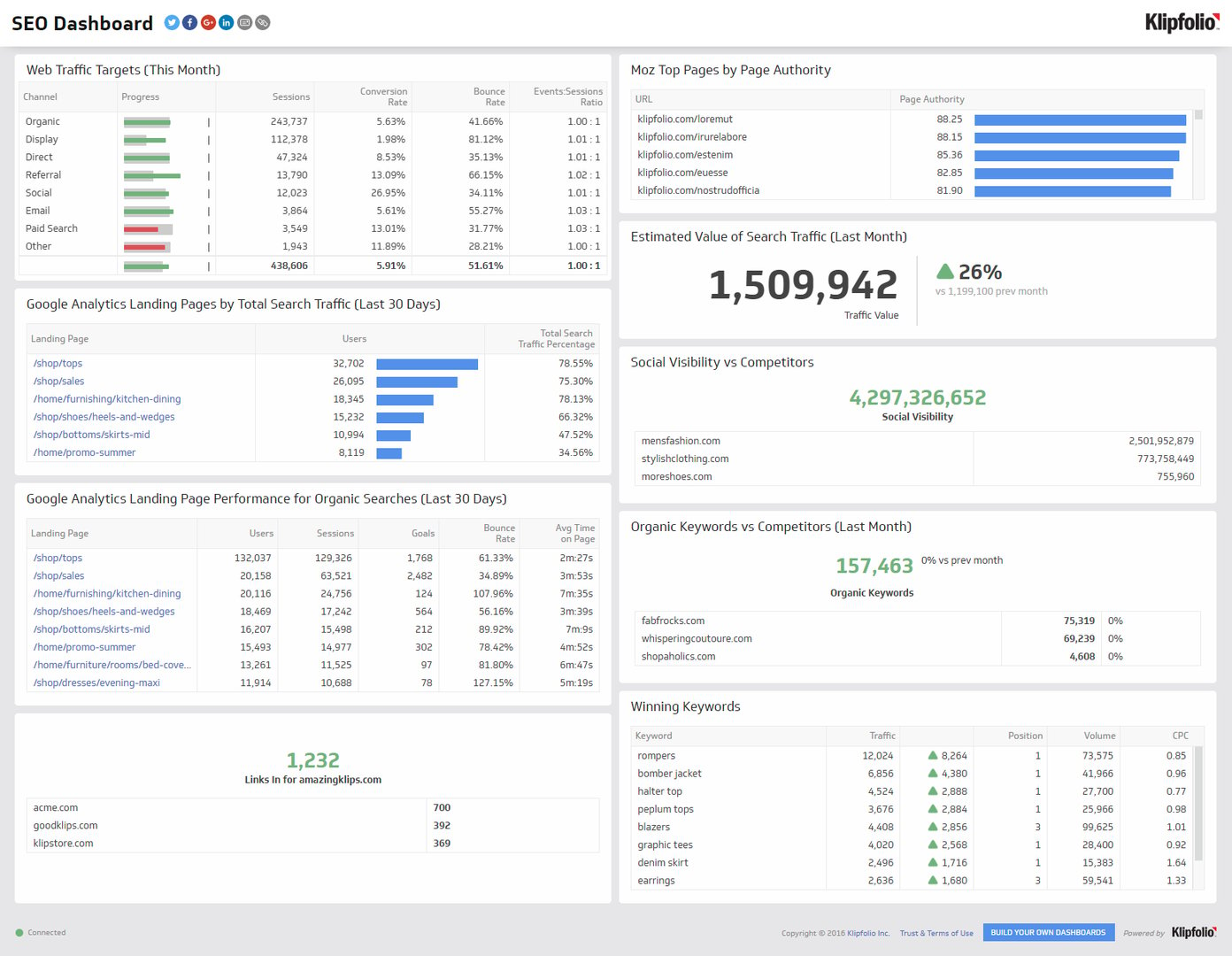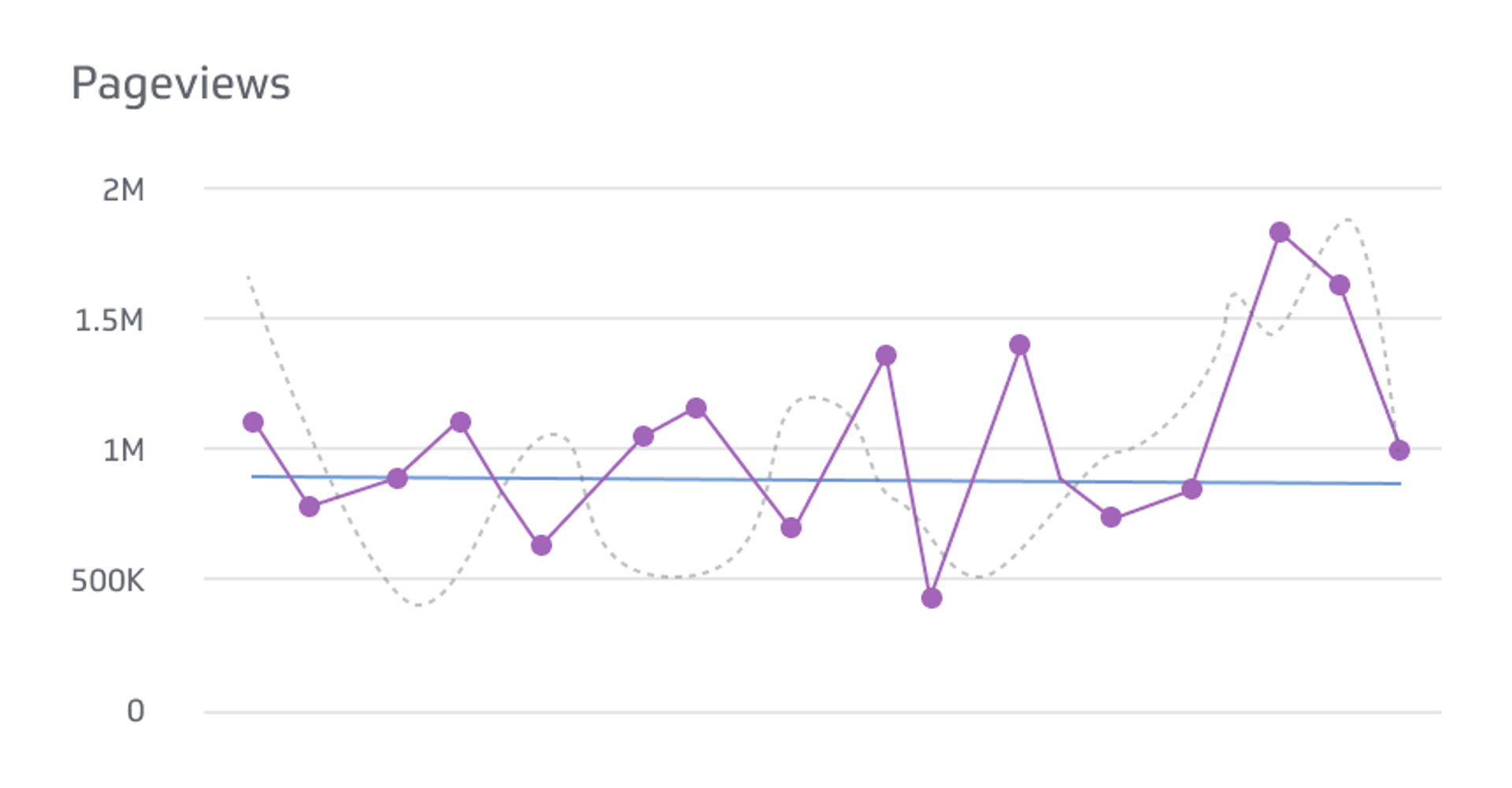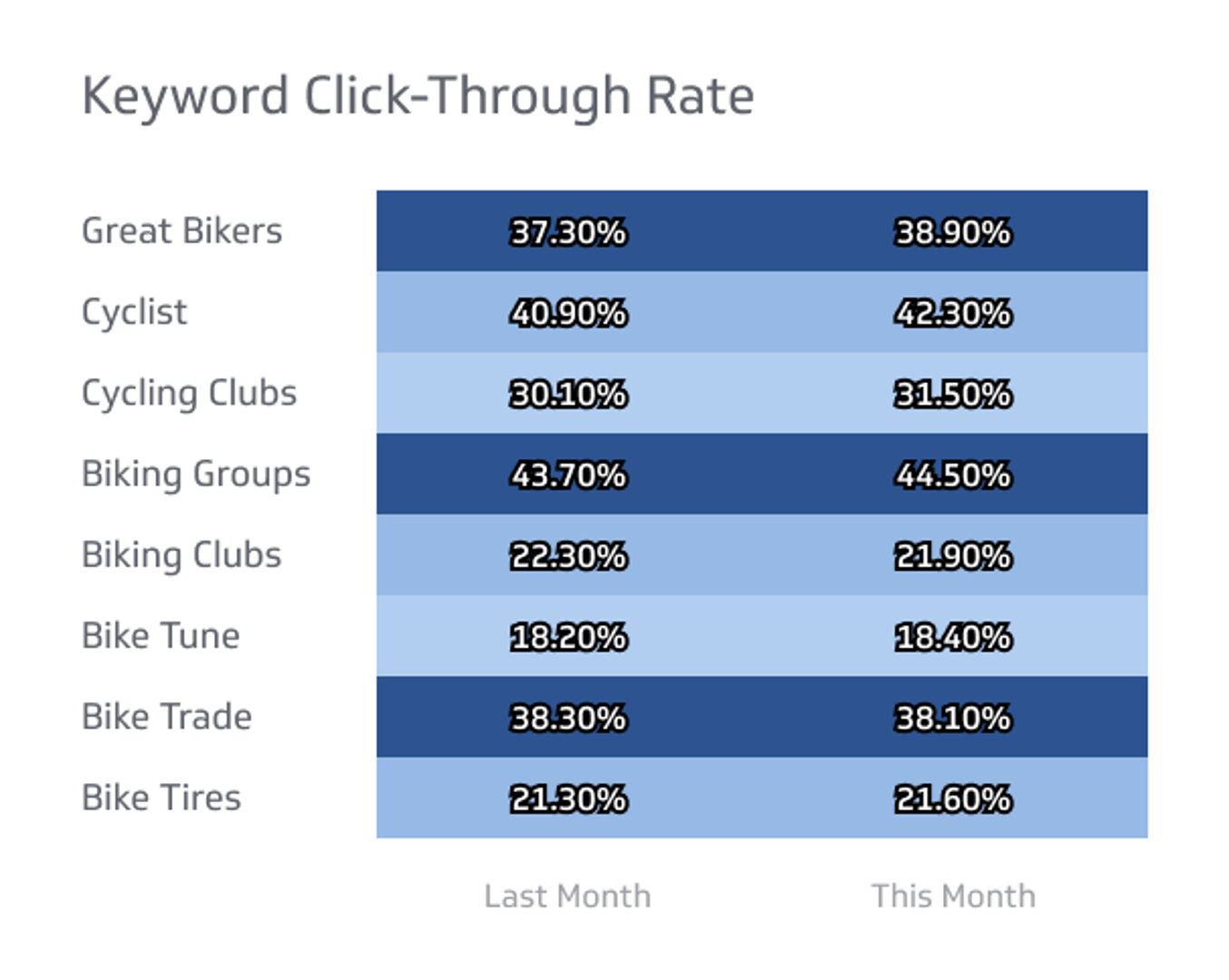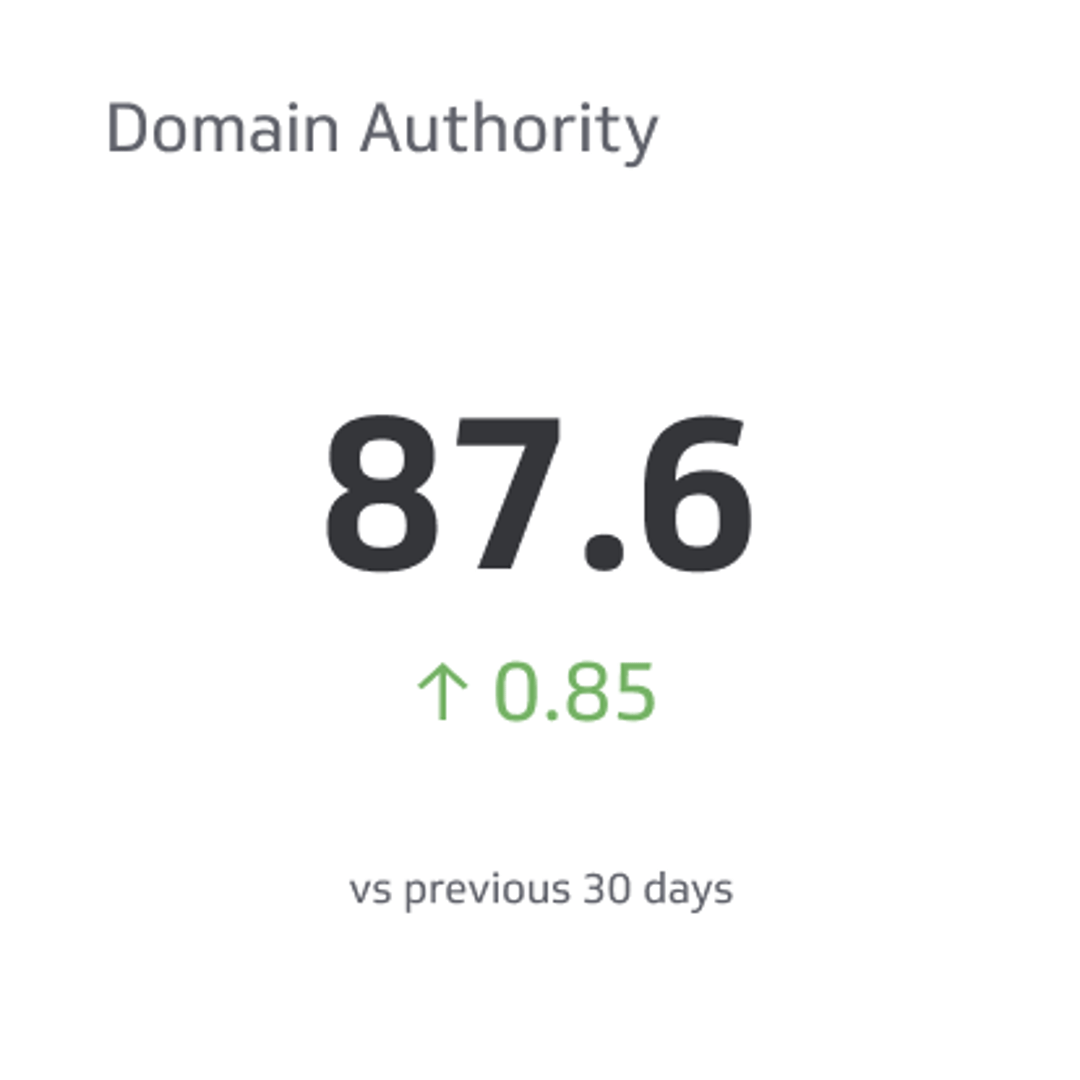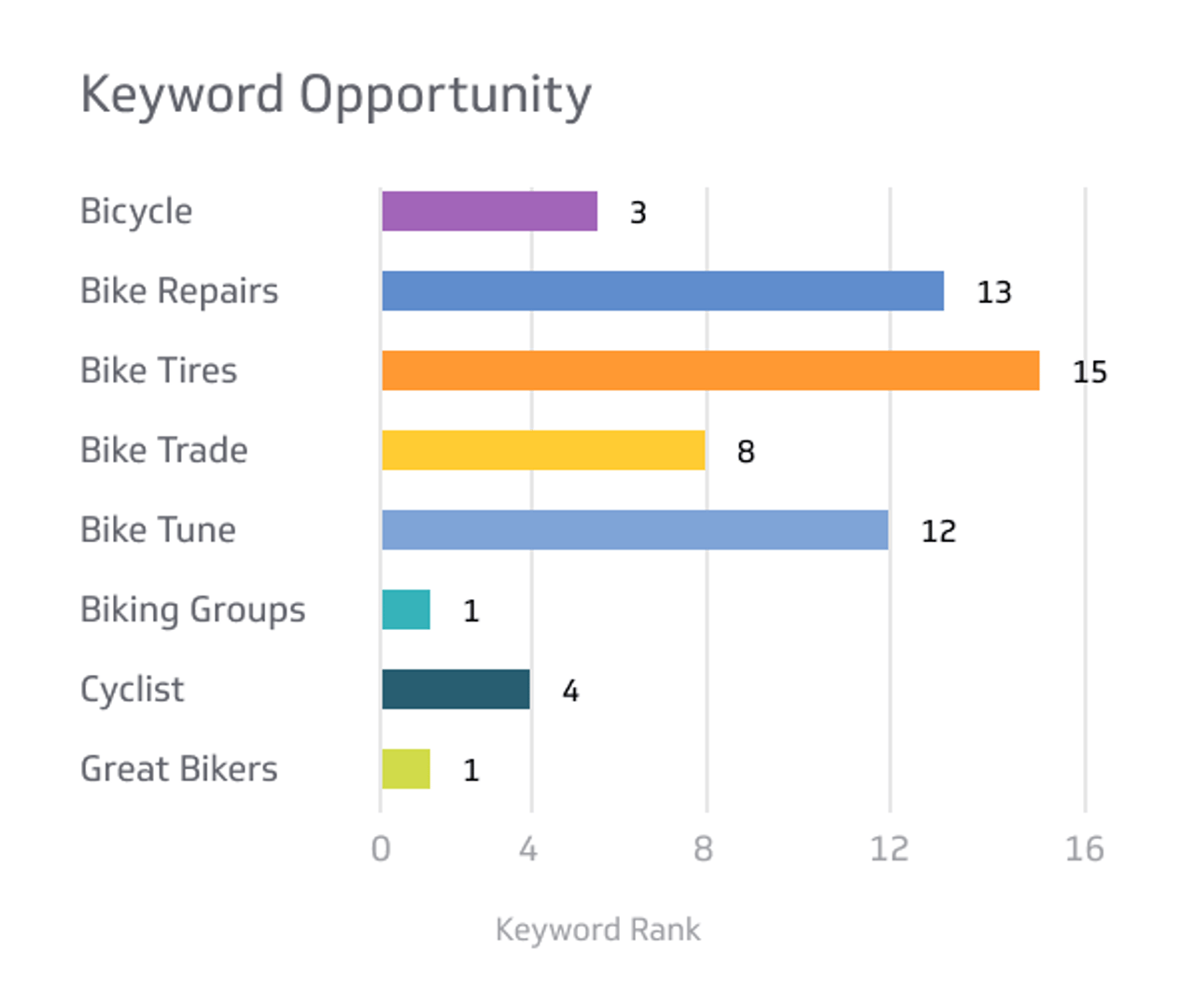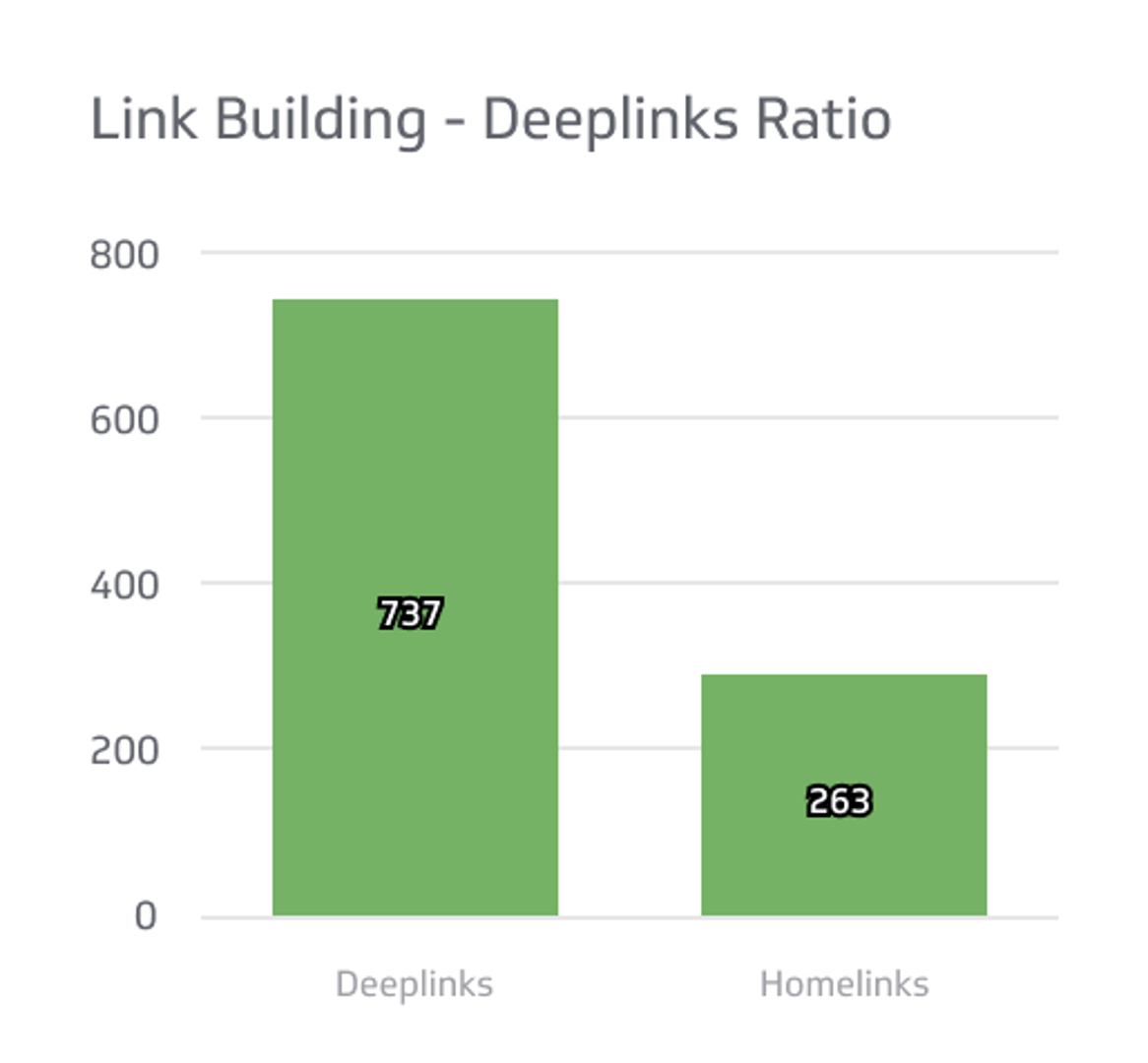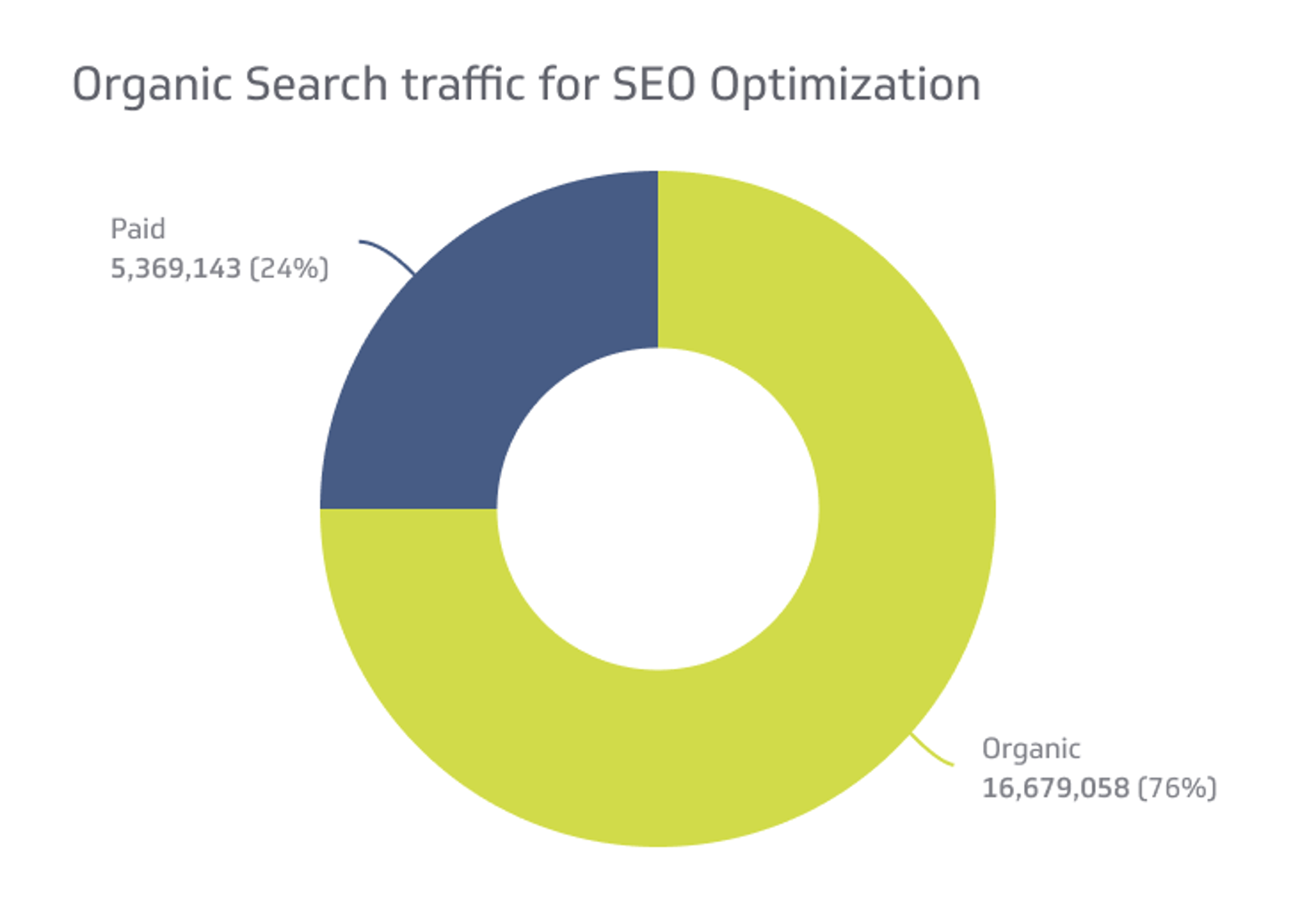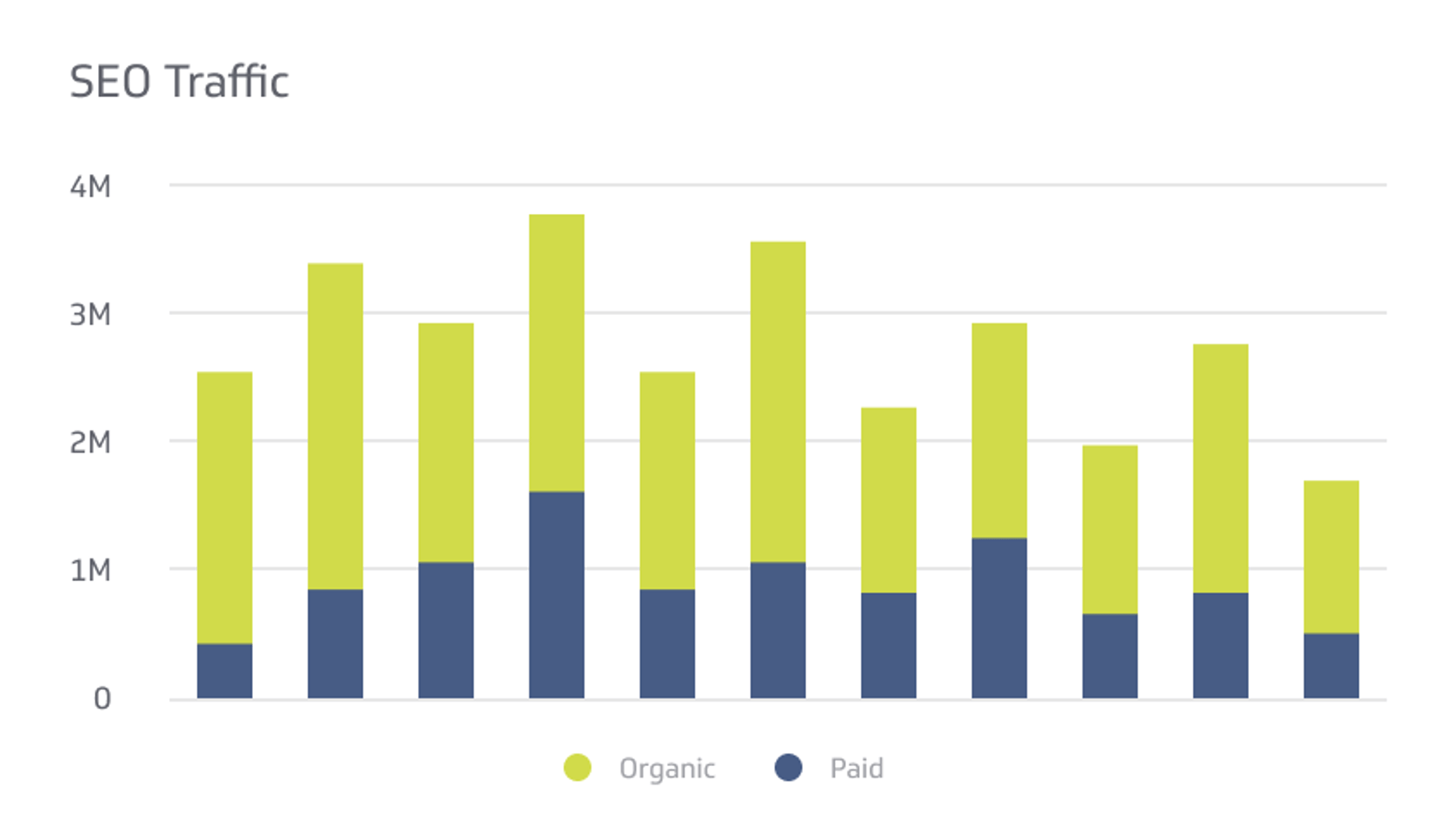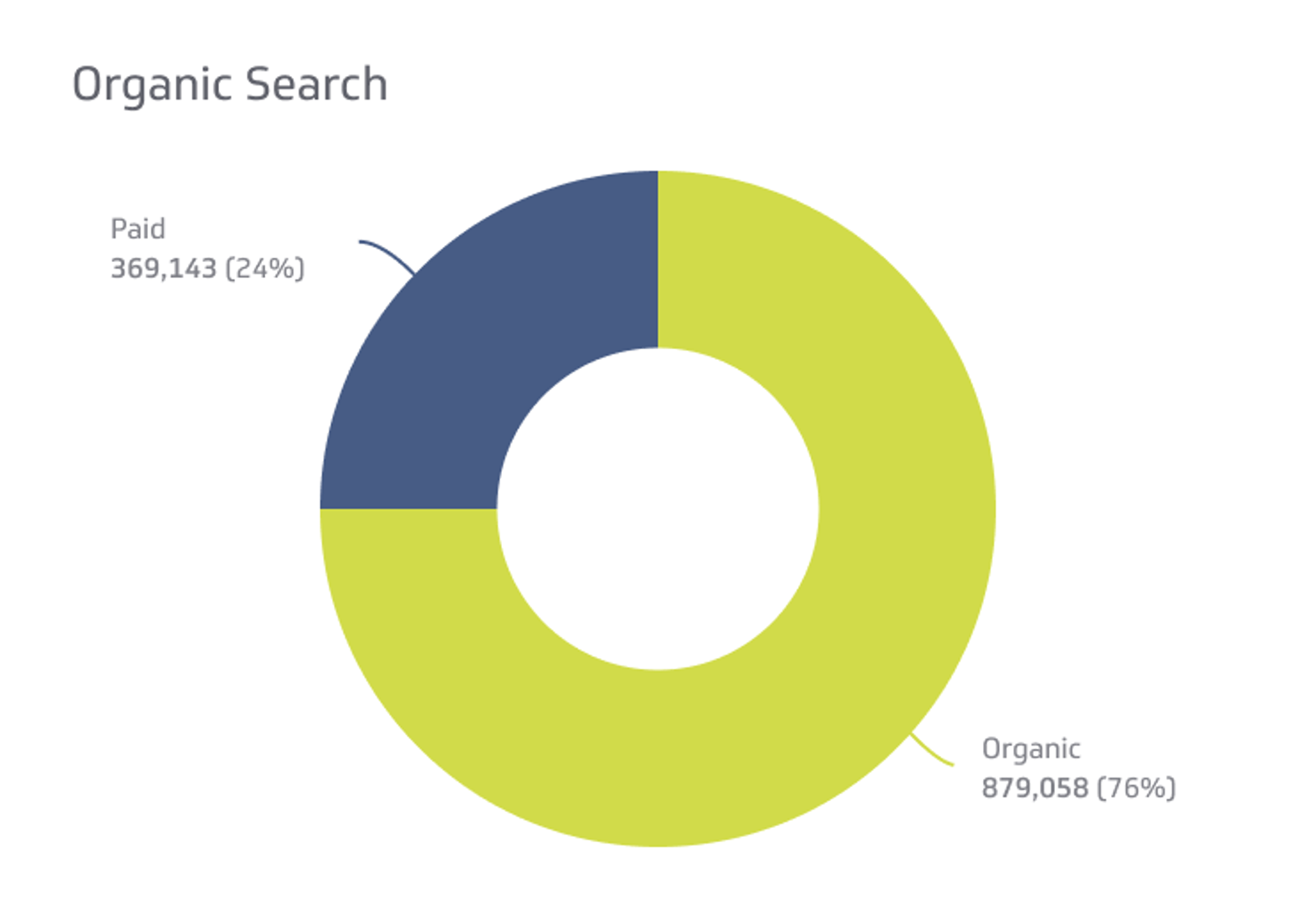SEO Metrics & KPIs
KPIs & Metrics for modern SEOs
Track all your SEO KPIs in one place
Sign up for free and start making decisions for your business with confidence.
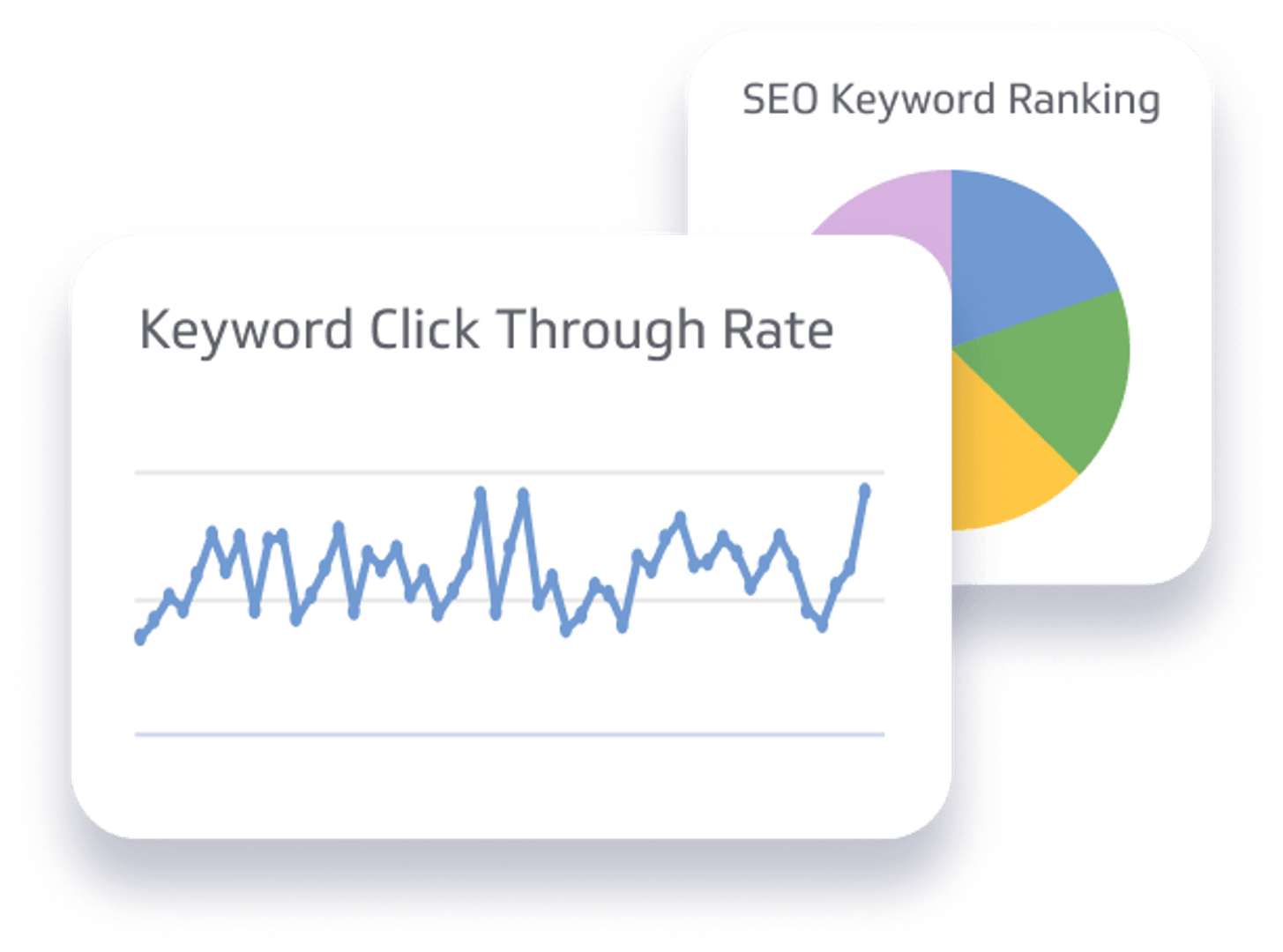
SEO KPIs (Key Performance Indicators) are vital metrics that help businesses gauge the success and effectiveness of their search engine optimization endeavors. This article will define and explore the significance of various SEO KPIs, demonstrating how they can help you align with your business goals.
By tracking SEO KPIs, you can improve your website's organic traffic, keyword rankings, conversion rates, backlinks, and more.
What Are SEO KPIs?
Put simply, SEO KPIs are measurable values that assess the effectiveness of your ongoing SEO strategies. They act as guideposts, showing you how to improve organic traffic, higher keyword rankings, increased conversions, and more robust backlink profiles.
What Makes SEO KPIs Important?
By tracking KPIs, you can gain valuable insights into the performance of your business's website.
These metrics reveal the effectiveness of your keywords, content optimization, backlink building, and other SEO activities that are vital to your overall outreach and, thus, sales.
With SEO KPIs, you and your team can identify specific areas for improvement, make data-driven decisions (as opposed to emotion-based ones), and track your progress over time.
How do you define the right performance indicators?
To drive meaningful insights and support data-driven decision-making, it is important to identify and define the right KPIs. To achieve this, just remember four things: it has to be aligned with your strategy, actionable, realistic, and measurable.
SEO KPI examples
Each department uses different KPIs based on specific business goals and targets. For marketing, you’ll definitely be looking at things that concern the different aspects of your work, such as bounce rate, the quality of backlinks, and organic visibility. In the next section, we’ll dive deeper into specific KPIs you should be tracking for SEO.
17 Key SEO KPIs to Track
Here are the 17 key SEO KPIs that businesses often track:
- Organic Visibility
- Organic Traffic Lead Conversions
- Overall Sales Conversion Rate
- Organic Traffic by Location
- Keyword Rankings
- Bounce Rate
- Backlinks
- Page Load Time
- User Engagement
- Average Engagement Time on the Specific Page
- Social Signals
- Click-Through Rate (CTR)
- Google Business Profile Metrics
- Site Architecture and Internal Links
- Cost Per Acquisition
- SEO ROI
- Branded VS Non-Branded Traffic
1. Organic Visibility
Organic visibility, also known as search visibility, is a crucial SEO KPI that measures how well your brand appears in search results when users search for your brand or related topics.
Although some people don't consider search or organic visibility a metric you should track because it's a non-conversion metric, organic visibility is still closely correlated with your business growth.
Organic visibility highlights your business's "share of voice" (SOV) in marketing terms, and it goes beyond just the traditional measurements against the ten blue links on a search engine results page (SERP).
It also encompasses various other SERP features such as local packs, knowledge panels, featured snippets, and an expanding list of other elements.
To gauge or track your organic visibility, you can utilize tools like Google Search Console, which provides a general overview of your search impressions over a specific timeframe.
Impressions reflect the number of times your website appeared in search results, even if those searches didn't result in clicks. This metric demonstrates the ongoing growth in your visibility and indicates the type of searches in which your site was visible.
Enhancing your organic visibility has significant advantages as it increases your potential reach to potential customers. By increasing your brand's visibility, you can tap into a larger audience and boost your chances of attracting valuable organic traffic.
Tools like Ahrefs' Rank Tracker also offer insights into search visibility, especially for specific keywords. Still, it's worth noting that, as a small business, your website may not immediately feature prominently in such rankings.
In any case, tracking and improving your organic visibility and other SEO KPIs will strengthen your brand's online presence and attract targeted traffic to drive business growth.
2. Organic Traffic Lead Conversions
Organic traffic lead conversions act as the first section of the bridge between your marketing efforts and revenue generation for your business.
Lead conversion refers to turning traffic into actual leads. Regarding organic traffic, lead conversions typically involve:
- Subscribing to a newsletter
- Filling out a contact form
- Downloading a whitepaper or ebook
- Making a purchase
- Requesting a quote
These actions signify that the lead has progressed through the sales funnel and is moving closer to becoming a paying customer.
So by tracking lead conversions, businesses can assess the effectiveness of their SEO (and other marketing) strategies and identify specific areas for attaining more leads.
Google Analytics 4 is a valuable tool you can use to see various insights and accurately interpret data from this SEO KPI.
But it's helpful to remember the difference between conversions and conversion rates.
Traffic lead conversions are the total number of leads, while the conversion rate is the percentage of conversions to leads in relation to your organic traffic. Conversion rate provides a more accurate representation of your SEO effectiveness.
You can navigate to the Admin section and access the Events feature to track and analyze lead conversions in Google Analytics. Here, you can designate specific events as indicators of conversions.
By marking these events, you can begin tracking and measuring the impact of conversions on your organic traffic and overall SEO performance.
3. Overall Sales Conversion Rate
The overall sales conversion rate is arguably one of the most significant key performance indicators, as it measures the percentage of leads or prospects that convert into actual paying customers.
In this way, it assesses your business's ability to generate leads and attain real revenue from those leads, which is the ultimate goal of most businesses.
In other words, the sales conversion rate is highly relevant as a KPI because it directly correlates with your business's success, profitability, and long-term sustainability.
A high conversion rate demonstrates that you're effectively turning a significant portion of your leads into customers, increasing sales and revenue.
On the other hand, a low sales conversion rate may highlight potential issues in your sales funnel or the need for improvements in your sales or marketing strategies.
Calculating Sales Conversion Rate
To calculate the overall sales conversion rate, divide the number of converted leads by the total number of leads and multiply by 100 to get the percentage.
For example, if you got 100 leads from your SEO, marketing, and sales efforts and 45 of them became customers, your conversion rate would be 45%.
Implementing good CRM (Customer Relationship Management) software or other sales tracking tool is a helpful way to monitor the progress of leads through each stage of the sales process and determine the conversion rate at each step.
Improving the quality of your leads, communication, follow-up, landing pages, and SEO strategy can all impact your resulting lead conversion rate.
4. Organic Traffic by Location
Tracking organic traffic by location helps you understand which geographical areas offer the most growth potential and allows you to allocate resources accordingly.
By tailoring your SEO efforts to specific locations, you can attract more relevant organic traffic, increasing visibility among the right audiences and ultimately driving business growth in your target markets.
Physical Business
Tracking organic traffic by location is essential for businesses with a physical presence, as it provides unique insights into the effectiveness of local SEO efforts.
Implementing UTM parameters on your Google My Business page can be beneficial when it comes to local organic traffic.
This allows you to distinguish between traffic originating from general search results and traffic specifically generated from the "Local Pack" or Google Maps.
By segmenting and analyzing this data, you better understand the geographical areas where your organic traffic originates.
Non-Physical Business
If you don't have a physical business, measuring SEO traffic by location provides valuable information for targeting specific local markets.
It enables you to identify the regions or cities where your website attracts the most visitors, which can then guide your marketing strategies, content creation, and optimization efforts to better cater to the preferences of your target audience in each location.
Furthermore, understanding the geographical distribution of your organic traffic allows you to refine your local SEO initiatives.
By analyzing the performance of different locations, you can identify areas where you want to focus more on improving visibility and rankings in local search results.
These strategies include utilizing local keywords, creating location-specific landing pages, or leveraging local directories and citations.
5. Keyword Rankings
Keyword ranking is a fundamental SEO KPI because it provides insights into the performance and visibility of your website in search engine results for relevant keywords.
In the past, people primarily focused on tracking small keywords to gauge their SEO strategy's success. However, with the development and evolution of semantic search, a single page of content can now rank for numerous keywords and search contexts.
In any case, monitoring keyword rankings allows you to identify which keywords drive the most traffic to your site and influence your overall business outcomes.
High keyword rankings often correlate with higher website traffic, relevant leads, and, thus, the potential for increased conversions.
By staying informed about the keywords you rank well for and those where you may need more visibility, you can understand the effectiveness of your content and make informed adjustments to your SEO strategy.
Top Page Ranking
Think about the last time you did a Google search. Did you make it to the second page, or even halfway down the list, before clicking on a seemingly relevant link?
Tracking keyword rankings is crucial for identifying your business' position on the front page of search engine results.
Having keywords in the top three search results significantly increases the likelihood of attracting a substantial amount of traffic, as these positions receive the majority of clicks from people searching these keywords.
Tracking Keywords
You can use tools like Ahrefs, Google Analytics, or SEMrush to track keywords These tools provide valuable data on your rankings, allowing you to identify fluctuations and make accurate decisions.
Additionally, regularly assessing keyword rankings helps you assess your current standing, address on-page SEO factors, and explore opportunities for improvement, such as link building and content creation.
Ultimately, tracking keyword rankings is an ongoing process that requires consistent effort and attention.
By improving your SEO visibility and overall keyword rankings, you can enhance your website's authority, relevance, and organic search performance, driving sustained growth in your online presence.
6. Bounce Rate
A website's bounce rate indicates the percentage of users who visit a page on the site and then leave without taking action.
It serves as a simple yet revealing measure of how engaging your content is and how well it aligns with the search queries that led users to your page in the first place.
Unlike many other KPIs, having a "high score" for this one isn't a good thing. A high bounce rate often reveals that your page needs to capture the attention or interest of visitors, resulting in missed opportunities for conversions.
That said, a high bounce rate indicates poor website performance. It can also mean low average session durations, negatively impacting your search rankings.
By regularly tracking bounce rates, you can identify areas for improvement on certain pages and make small changes that can lead to significant enhancements in user engagement over time.
And in addition to measuring the overall bounce rate of your website, it's also valuable to measure the bounce rate of individual blog posts and landing pages to identify areas of your site that might need specific attention.
To assess bounce rate, you can use Google Analytics 4, which will show you the bounce rate of your entire website or specific pages if you go to "Reports" then "Engagement" then click on the "Pages and screens" section.
Optimizing your pages to reduce bounce rates can increase the chances of retaining visitors, encouraging them to explore further and ultimately driving conversions and business success, making it a good SEO practice for any website to have.
7. Number and Quality of Backlinks
Backlinks are an essential component of many businesses' SEO strategies. They're essentially hyperlinks on other websites that direct users to your website, acting similar to "letters of recommendation" to search engines like Google and signaling your site's credibility and popularity.
Google considers backlinks one of its most important ranking factors, making them crucial for improving your website's visibility in search engine results. It's also essential to examine various link metrics to assess the health of your link profile and compare it to your competitors.
When measuring backlinks, you should consider the following:
- the number of referring domains
- the total number of backlinks
- the number of new links gained
- and the number of links lost over time
These metrics combined provide insights into the growth and stability of your backlink profile.
Furthermore, while some companies get caught up in a numbers race, the quantity and quality of backlinks are significant.
The more backlinks your website accrues, the better, but it's imperative to focus on reputable and authoritative domains, which will deem your content more valuable and trustworthy.
Competitor research is also crucial in understanding the backlink landscape. By examining the backlinks acquired by your competitors, you can set benchmarks and identify opportunities to improve your link profile.
Regarding tracking, tools like Google Analytics, Ahrefs, SEMrush, and Moz offer easy insights into your backlinks, including the number of backlinks, domain authority, toxic score, referring domains, and spam score.
To boost your website's backlink profile, focus on creating compelling and valuable content that naturally attracts backlinks, building relationships with other website owners, guest blogging, and engaging in industry collaborations.
8. Page Load Time
A fast page load speed is crucial for providing a positive user experience. That said, another critical factor in website performance and user experience is page load time, which directly impacts various metrics and long-term search engine rankings.
For example, when a website takes too long to load, it increases the likelihood of users bouncing off and abandoning the site.
And how long is too long? Research shows that most site visitors will leave if a website takes longer than three seconds to load. That's why slow loading speeds can frustrate users and lead to high bounce rates, negatively affecting user engagement and conversion rates.
Large images, videos, and GIFs can significantly impact page load times.
So while visually appealing media like that may enhance the user experience in some way, if it causes slight delays in page loading, it can result in visitors clicking the back button and seeking alternatives.
To assess and optimize your site's page load speeds, tools like PageSpeed Insights can be useful. These tools provide information regarding load times across multiple platforms and identify specific factors contributing to slow site speed.
It's recommended to aim for a page load time of no more than 5 seconds, and Google suggests even less (2 seconds) as an acceptable threshold for e-commerce websites.
Suppose you want to improve your page load time. In that case, you can look towards various strategies, such as optimizing image sizes, leveraging browser caching, minimizing server response time, and reducing the number of HTTP requests.
Ultimately, by prioritizing fast and efficient loading, website owners can enhance user experience, reduce bounce rates, and improve their overall search engine rankings.
9. User Engagement
User engagement tracking is controversial when tracking SEO KPIs because they're seen as useful only after you segment them on a page level and for a specific traffic source.
But depending on the nature of a business, various engagement metrics may hold significance as KPIs.
User engagement is an umbrella term that involves monitoring various metrics for user interaction with a website. These metrics include average time on page, session duration, bounce rate, and pages per session.
Analyzing user engagement metrics requires context and consideration of specific business goals. For instance, if a business focuses on informative, long-form content, a high average time on the page can indicate user satisfaction and enjoyment.
On the other hand, if a website aims to convert users with concise pages, a high average time on the page might suggest confusing or unconvincing content.
Tools such as Google Analytics and Google Search Console can assist people in tracking their user engagement in many ways.
Click by Queries
Tracking organic clicks by queries and pages can help you understand the search queries that generate the most traffic and the pages that receive the highest click-through rates from search results.
Session Duration Metrics
Session duration metrics provide an overview of users' time on a website, including multiple pages within a session.
A session over 75 seconds is generally considered positive, indicating user engagement. Conversely, a session duration of fewer than 30 seconds suggests that the website may not be optimized for relevant keywords or lacks engaging content.
Monitor all user engagement metrics consistently and consider seasonal trends (the month of one year compared to the same month of the previous year) to gain a comprehensive understanding of user behavior over time.
10. Average Engagement Time on the Specific Page
We discussed how average session time on the website is a popular user engagement metric to track. Still, the average engagement time on each page might arguably be more important regarding your SEO strategy.
Measuring the average engagement time on specific website pages conveys how long users stay and interact with your content on just that page after arriving from any source.
This metric is helpful to track - especially for a particularly important page like a landing page, service page, and guest blog post - for two reasons.
Firstly, search engines prioritize content that users find valuable, so if users don't like your content and leave quickly, it can negatively impact your search rankings. Secondly, if users cannot navigate your site effectively and leave, it hinders conversion opportunities.
On the other side of the coin, a high average time on a page can also indicate long-term ranking success.
If users spend significant time on a page and the content exceeds that of competitors' higher-ranking posts, it signals to search engines that your content aligns with searcher intent for a given keyword.
Focusing on overall usability and analyzing this metric to make informed adjustments will influence the time users spend on a page, which is essential for optimizing engagement.
To monitor this metric, you can utilize Google Analytics 4 (GA4) by accessing the "Reports" section, then selecting "Engagement," and finally, "Engagement Overview."
11. Social Signals
Social Signals are the online interactions and engagements on different social media platforms that reflect people’s opinions about a particular topic, product, or service.
It is one of the key KPIs businesses often track, as it is important in improving search engine ranking.
Imagine a business as a runner at a marathon. The range of social signals can be likened to the cheers from the crowd – like virtual ‘claps’ – generated by spectators along the course, which motivates all runners, especially when more and louder cheers are coming from either side of the track.
Similarly, for businesses, social signals support and encourage their product or service, helping drive more sales and stronger website rankings.
When a company receives positive customer feedback through a social network like Facebook, Twitter, or LinkedIn, it indicates that it provides relevant content and information that people can use and appreciate.
This increases the chances of users visiting the website, sharing it with others, and engaging with them further. All these activities help to build brand recognition for the business and generate more traffic to their site.
As such, social signals are very important for businesses looking to drive organic traffic to their website and increase visibility in search engine results pages (SERPs).
12. Click-Through Rate (CTR)
Click-through rate (CTR) is an essential SEO metric that measures the effectiveness of your search engine listings in attracting clicks, signifying interest, and engagement.
While it's not a confirmed, direct ranking factor in terms of conversions or revenue, monitoring CTR at both the page and query levels is crucial for evaluating the performance of your content.
CTR represents the percentage of people who click on your webpage after encountering it on the search engine results page (SERP). The higher your rank, the better your CTR is expected to be.
Tracking CTR allows you to assess the relevance of your title tags and meta descriptions displayed on the SERPs concerning users' queries.
You can utilize Google Search Console's performance report to analyze CTR for your pages and queries. It provides valuable data on the proportion of SERP impressions that result in clicks, giving you a clear picture of how well your search engine listings attract people.
And if you continuously monitor and optimize your CTR, you'll inevitably enhance the visibility and traffic of your webpages, ultimately driving higher engagement to achieve your SEO goals.
13. Google Business Profile Metrics
Google Business Profile, previously known as Google My Business, is a unique Google Analytics tool that supports companies and organizations in managing their online presence.
It's particularly beneficial for local businesses looking to enhance visibility and engage with customers in their target area.
Once you've set up your Google Business Profile, you gain access to revealing metrics that the platform automatically tracks.
These metrics include searches, clicks, views, calls, direction requests, and more.
Tracking these metrics allows you to measure the impact of your efforts in optimizing your Google Business Profile, website, and listing management.
By monitoring the metrics, you can identify improvements that lead to increased searches, views, and customer interactions, such as direction requests and calls.
The ability to attribute these outcomes to your hard work and optimizations is vital.
It enables you and your team to gauge the effectiveness of your strategies and make smart business decisions to enhance your online presence further and attract more customers.
It also enables you to identify trends, assess your marketing initiatives' success, and adjust your online strategy if needed.
14. SEO Optimized Site Architecture and Internal Links
Site architecture and internal links are like the bones of a human body - they provide support and structure for everything else. Just like our bones, when it comes to website architecture and internal linking, if these elements aren’t correctly placed, our websites will be weak and unable to perform optimally.
Good website architecture is essential for SEO success because it allows search engine spiders to crawl your pages to index them properly and easily. It also helps visitors find their way around your site to quickly access the content they need.
Internal link building also plays an important role in SEO as it helps create pathways from one page to another within the same website or across several sites with similar topics or themes. This helps search engines understand your website better and can increase your ranking in search engine results.
15. Cost Per Acquisition
Cost per acquisition (CPA) assesses the expenses of acquiring a single converting user through your SEO efforts.
The costs incurred in SEO campaigns include SEO tools, SEO team salaries, marketing agency fees, link building, content production, and more.
Tracking CPA is vital in understanding the efficiency of your SEO campaigns, particularly when compared to customer lifetime value (CLV). By evaluating CPA in relation to CLV, you can better understand the potential inefficiencies in converting new customers.
A high CPA may indicate that your expenditures are allocated towards content that targets inappropriate keywords or fails to engage a user base likely to convert. Or in other words, you're wasting money on an ineffective strategy.
However, it's important to recognize that SEO efforts and campaigns require time to yield noticeable results. Therefore, tracking and monitoring CPA over an extended period is advisable rather than relying solely on isolated metrics.
By analyzing CPA, you can make informed decisions to reallocate resources, optimize your SEO strategies, and enhance the efficiency of your customer acquisition process.
Further, it allows you to align your investments with the keywords and audience segments that generate the highest conversions, maximizing the return on investment (ROI) for your SEO campaigns - which we'll get to next.
Remember that CPA, like all of these SEO KPIs, is just one piece of the puzzle, and integrating it with other SEO metrics provides a more comprehensive understanding of your campaign performance.
16. SEO ROI
Return on Investment (ROI for short) is a key metric used in many types of businesses, as it evaluates the financial returns derived from the money invested in a particular endeavor.
In the context of SEO, ROI highlights the success (or lack thereof) of your SEO strategy by quantifying the value (usually sales) you obtain from organic conversions in relation to the cost of your SEO investments.
Calculating SEO ROI entails subtracting the cost of SEO investments from the value of organic conversions, dividing it by the cost of SEO investments, and multiplying the result by 100. This formula provides a percentage that represents the ROI.
However, measuring SEO ROI can be challenging due to the extended time frames required to observe tangible results.
Measuring this may take several months, or even up to one year or longer, to witness the full impact of SEO efforts, especially for initiatives like optimizing landing pages.
Despite the difficulty in measuring SEO ROI accurately, achieving a positive ROI is the ultimate objective of any SEO strategy.
It signifies that the time, resources, and investments dedicated to content creation, website maintenance, and outreach campaigns have been worthwhile.
Establishing clear goals, tracking relevant metrics, and analyzing trends over an extended period is crucial.
Additionally, integrating ROI analysis with other SEO KPIs, such as organic traffic, conversions, and keyword rankings, provides a comprehensive understanding of your SEO initiatives' overall impact and value.
Ultimately, SEO ROI serves as a guiding metric that helps you assess the financial viability of your SEO investments and make informed decisions to optimize your strategies and allocate resources effectively.
17. Branded VS Non-Branded Traffic
Last but far from least is branded vs. non-branded traffic.
When analyzing website traffic, it's important to distinguish between branded and non-branded traffic. This is because branded traffic includes visitors who are already familiar with your business or have received recommendations from others.
That said, while branded traffic indicates the success of certain marketing channels, it's not typically considered an SEO (KPI) because it does not directly reflect the effectiveness of your SEO efforts.
On the other hand, non-branded traffic consists of users who discover your website through search engine queries associated with the products or services you offer. These individuals may have yet to learn about your business before encountering it on search engine results pages.
So, measuring the split between branded and non-branded traffic is crucial for evaluating the impact of your SEO strategy.
You can use advanced filters in tools like Semrush's Organic Research tool to track this metric.
By filtering out branded searches that contain your company name, for example, you can focus on assessing the number of visitors who found your website by searching for your services or products specifically.
Understanding the split between branded and non-branded traffic gives you a more comprehensive view of your website's performance, thus helping you adjust your SEO strategy for greater visibility among new customers and support your business goals.
SEO KPIs help you evaluate how your business is doing
All in all, selecting and tracking appropriate SEO (KPIs) is invaluable to businesses that want to evaluate the success of their SEO strategies and make data-based decisions moving forward.
Optimizing the right KPIs can support businesses by enhancing their visibility, attracting more organic traffic, and improving sales conversion rates, thus leading to long-term growth and success in the digital space.
